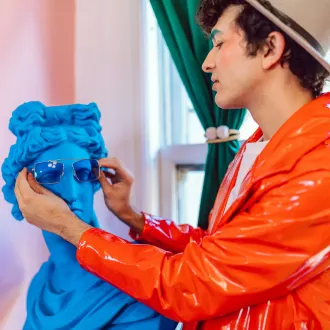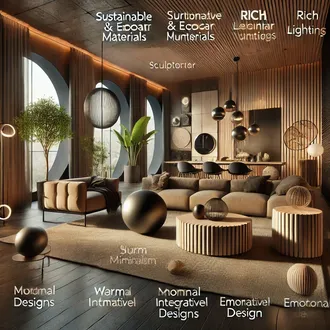Transcription Styles in interior decoration (Iii)
In this presentation we will continue studying the most outstanding features of some of the most popular styles of interior decoration: Minimalist, Industrial, Retro, Eclectic and Bohemian.
Minimalist Style
Minimalism has its origins in the 1960s of the twentieth century, but its imprint remains in force in interior decoration to this day, because it is not only a decorative style, but a philosophy of life that seeks to revalue the values of man; for which proposes that the human being is free of the superfluous that surrounds him and instead pursue the order, balance, utility; but without sacrificing the beauty that everyone needs, or the satisfaction of their needs.
In essence, in the minimalist style space is vital, so it proposes a decoration with as few elements as possible, including only the necessary furniture, and on them only some essential decorative element. The furniture should be functional, but with simple shapes, without any ornamentation.
The light in the minimalist style should be abundant to make the spaces look cleaner, wider and purer. Therefore, curtains should not be placed on the windows and glass through which natural light penetrates; instead it is recommended to use roller blinds, Japanese panels or Venetian blinds when it is very necessary. On the other hand, artificial light should come from recessed luminaires, as hanging lamps should not be placed, nor on the surfaces of the walls and ceilings.
Industrial Style
The industrial style emerged around the 1950s in the United States, when many young immigrants in big cities like New York and Chicago, unable to pay the rent to live in the center of the city, settled in old factories where there were many elements of these buildings, such as large windows, exposed steel beams, large lighting fixtures and other elements that had to be conditioned to make the spaces habitable.
Thus, over the years, this type of housing practically without divisions called lofts and with many architectural details in sight was gaining followers until it became a style with a significant number of followers, especially in bohemian environments and young people.
To achieve industrial environments, neutral colors are used on the walls and brick walls, concrete beams, steel or semi-finished wood are left exposed; iron furniture combined with wood is used; industrial accessories such as reflectors, surface pipes, iron shelves, etc. are added.
Retro Style
The retro style is inspired by the aesthetics of the 50's, 60's and 70's of the 20th century to give an exclusive and personal touch to interior decoration. One of the characteristic features of this style is the combination of different materials, textures and colors; as well as the use of cushions, carpets and wallpaper with abstract and futuristic geometric shapes.
To recreate the retro style, a wide variety of colors can be used, including soft shades of green, blue or yellow, combined with red, black and mustard yellow. Combinations of red, orange, white, and black are also widely used. Retro style furniture is characterized by being made by combining more than one material in one piece, for example: aluminum and plastic, glass and wood, and so on. The shapes of the furniture are usually unique, abstract or futuristic.
Eclectic Style
The eclectic style in interior decoration is one that includes the elements that we like the most from different styles and combines in an original and well thought out way elements of different materials, colors, textures, and periods, creating a coherent, original and unique space.
It is important when applying the eclectic style not to use too many elements, as this could overload and clutter them. One of the easiest ways to achieve the eclectic style in interior spaces is to use furniture of different styles in the rooms. To
interior style 3




